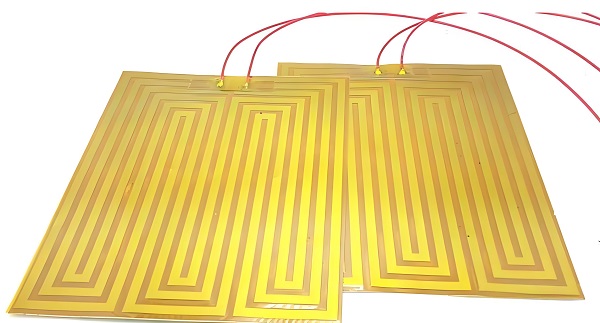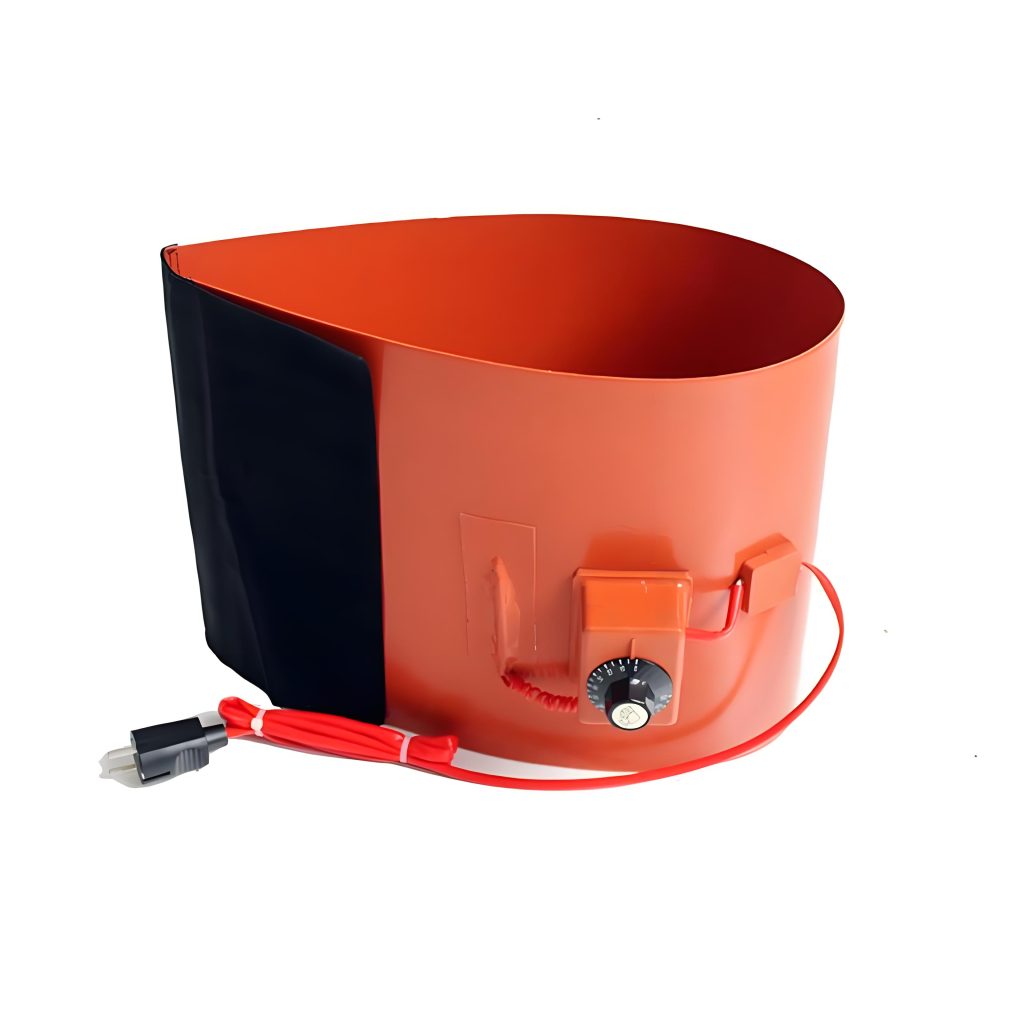Kapton heaters are specialized flexible heating elements made from polyimide film, a high-performance material known for its excellent electrical insulation, thermal stability, and chemical resistance. Unlike rigid heaters, Kapton heaters are thin, lightweight, and capable of conforming to irregular surfaces without compromising performance. They deliver consistent, even heat and are ideal for sensitive electronics, including lithium batteries.
The core of a Kapton heater is a resistive element, often etched or bonded between layers of polyimide. When electricity flows through the resistive element, it generates heat uniformly. Some designs integrate temperature sensors, enabling precise thermal control. Kapton heaters are not only efficient but also resistant to moisture, chemicals, and repeated thermal cycles.

Lithium batteries are highly sensitive to temperature. Cold environments can reduce battery capacity, slow chemical reactions, and even damage cells permanently. On the other hand, excessive heat can cause degradation or thermal runaway. Kapton heaters maintain an optimal battery temperature, improving performance, efficiency, and longevity.
In electric vehicles (EVs), for instance, cold temperatures can reduce driving range by up to 30%. By integrating Kapton heaters, batteries stay warm enough to deliver consistent power. In aerospace and drone applications, batteries must operate reliably at high altitudes with extreme cold. Kapton heaters provide lightweight, efficient heating without adding bulk or weight. For energy storage systems, they prevent freezing during winter months, ensuring energy availability when solar or wind generation is low.
Kapton heaters allow for precise, controlled heating. Unlike conventional battery warmers that heat the environment or rely on bulky components, these heaters attach directly to the battery surface or casing. This direct contact ensures fast response times and uniform heat distribution, avoiding hotspots or uneven thermal stress that could compromise cell integrity.
| Specification | Description / Range |
| Operating Voltage | 3V – 48V (customizable depending on battery system requirements) |
| Power Density | 5 W/in² – 15 W/in² for uniform heating without overheating |
| Temperature Range | Up to 200°C; safe operating range for lithium batteries: 60°C – 80°C |
| Thickness | 0.05 mm – 0.15 mm (thin enough for tight battery integration) |
| Flexibility | Can bend, twist, and conform to prismatic, cylindrical, or pouch cells |
| Adhesive Backing | High-temperature adhesive for secure attachment and electrical insulation |
| Thermal Response Time | Typically 5 – 15 minutes for small packs; 20 – 30 minutes for large packs |
| Durability | Resistant to thermal cycling, moisture, and chemical exposure |
| Lifespan | 5–10 years or thousands of thermal cycles, depending on operating conditions |
| Safety Standards | UL, CE, and other customer-specific certifications |
1. Battery Size and Shape
The first step in designing a Kapton heater is understanding the battery’s size and shape. Lithium batteries come in prismatic, cylindrical, and pouch forms, each with unique surface geometries. Accurate measurements are crucial to ensure the heater covers all critical areas. For irregular shapes, custom heater patterns or segmented heaters may be necessary to provide uniform heat across the entire cell surface, especially near terminals and edges where cold spots are more likely to occur.
2. Power Requirements
Determining the correct power requirements is essential for effective heating. The heater’s wattage should match the battery’s capacity, expected ambient temperature, and desired warm-up time. Oversized heaters can waste energy and risk overheating, while undersized heaters may fail to prevent freezing or maintain performance. Power density is typically set between 5–15 W/in² to ensure even heating without creating hotspots or overloading the battery.
3. Thermal Management
Effective thermal management ensures battery safety and longevity. Integrating temperature sensors, such as thermistors or PT100 elements, allows precise monitoring of heater performance. Coupled with a thermal controller, these sensors regulate power dynamically to prevent overheating. Feedback loops can automatically adjust heating output depending on battery temperature, maintaining optimal conditions while avoiding damage to the cell chemistry.
4. Placement & Installation
The placement and installation method of Kapton heaters are critical to performance. Heaters should be attached securely using high-temperature adhesives or mechanical clamps, ensuring full surface contact for uniform heat transfer. Care must be taken to avoid interference with battery assembly features, vents, or protective layers. Proper placement guarantees maximum efficiency while minimizing the risk of mechanical damage or insulation failure.
5. Electrical and Safety Compliance
Safety is a top priority when designing battery heaters. Proper electrical insulation between the heater and battery terminals is essential to prevent shorts or arcing. Adherence to standards such as UL, CE, or customer-specific certifications ensures the heater meets industry safety requirements. In some cases, additional protection like fuses or current-limiting circuits is included to prevent electrical hazards and ensure reliable operation under all conditions.
6. Environmental Factors
Kapton heaters must be designed to withstand the environment in which the battery will operate. Automotive, aerospace, and industrial batteries are often exposed to vibration, moisture, dust, or chemicals. Using durable polyimide material and high-temperature adhesives ensures that the heater maintains performance over time. For extreme cold or harsh conditions, multiple heater layers or increased wattage may be needed to maintain uniform temperatures across the battery pack.
7. Heater Configuration
Deciding between cell-mounted and case-mounted heaters is a key design consideration. Cell-mounted heaters provide direct contact and rapid response, ideal for single-cell or small packs. Case-mounted heaters, on the other hand, can warm multiple cells at once, simplifying installation in large modules while ensuring uniform heating. Segmentation may also be employed in large battery packs to provide modular control and redundancy, enhancing safety and reliability.
8. Flexibility and Thickness
The physical characteristics of the heater itself play a major role in design success. Kapton heaters are extremely thin, typically 0.05–0.15 mm, allowing them to fit into tight spaces without affecting battery packaging. Their flexibility enables them to conform to curved surfaces or complex pack layouts. Minimizing added weight is critical, especially for electric vehicles, drones, and portable electronics, where even small increases can impact performance or efficiency.

Customer Background:
A global electric vehicle manufacturer faced recurring issues with battery packs losing efficiency in cold climates. Their high-capacity lithium battery modules experienced reduced range, longer warm-up times, and uneven heating across cells. They needed a solution that could maintain optimal battery temperature without adding bulk or compromising battery safety.
Product Challenge:
Our Solution:
Danyu electronics provided a fully customized Kapton heater solution tailored to the customer’s battery packs:
Result:
The customized Kapton heaters improved battery warm-up times, increased cold-weather range, and maintained even temperatures across all cells. The solution enhanced overall battery lifespan, reduced energy loss, and provided the manufacturer with a reliable, scalable heating system for future EV battery designs.
1. Can Kapton heaters prevent battery freezing?
Yes. Kapton heaters maintain batteries at optimal temperatures, preventing freezing even in sub-zero conditions.
2. How fast do Kapton heaters warm up batteries?
Small packs typically reach desired temperature in 5–15 minutes. Large EV or industrial packs may require 20–30 minutes, depending on heater design and ambient conditions.
3. Are they safe for large battery packs?
Yes. Proper design, thermal sensors, and safety circuits ensure safe heating of even multi-kilowatt battery packs.
4. How long do Kapton heaters last?
High-quality Kapton heaters can operate reliably for 5–10 years or thousands of thermal cycles, depending on usage and environmental stress.
5. Can they be customized for irregular battery shapes?
Absolutely. Kapton heaters are flexible and can be cut, patterned, or shaped to fit prismatic, cylindrical, or pouch cells.
Simply drop your email or phone number in the contact form, and we'll promptly reply you shortly.